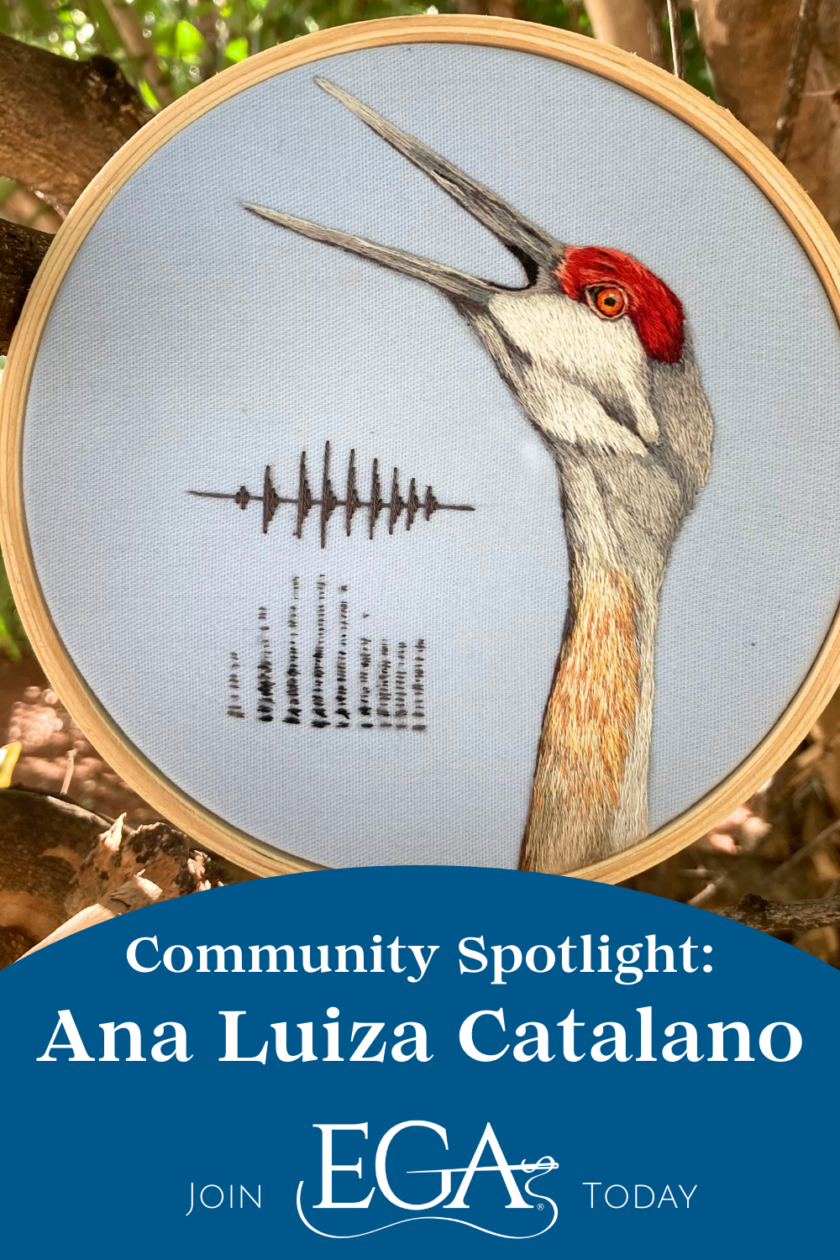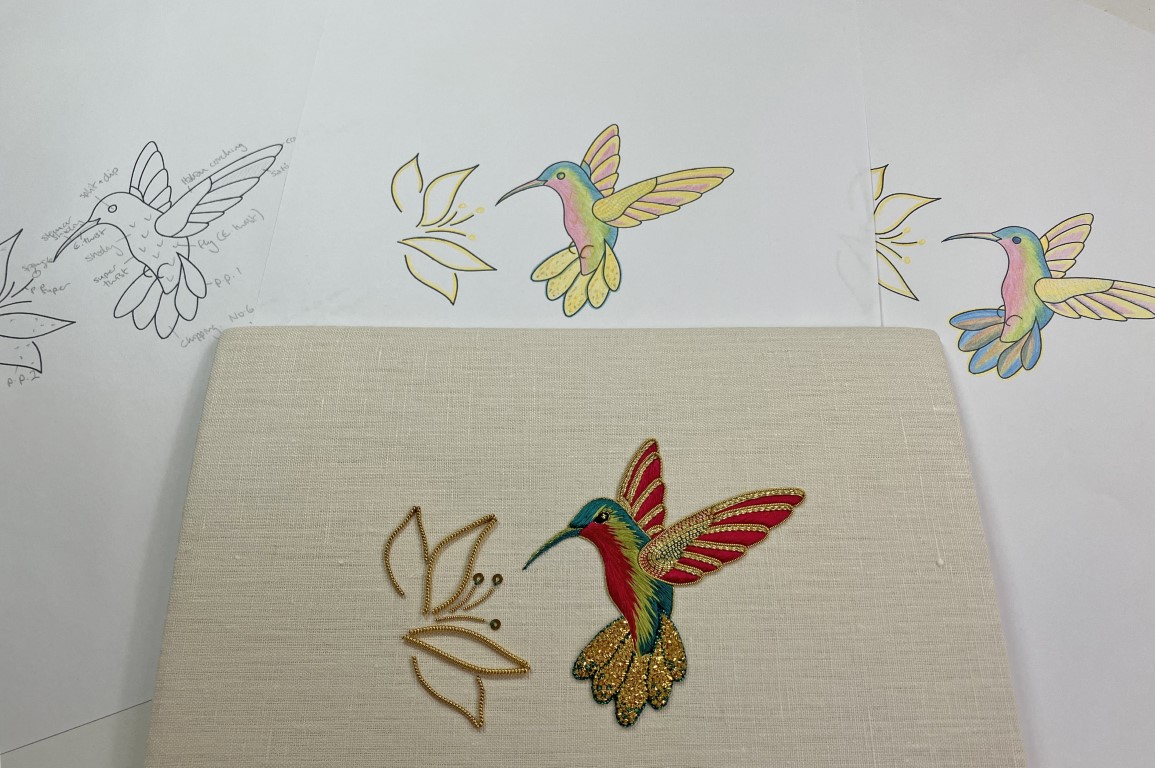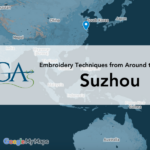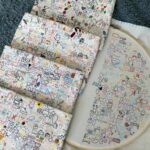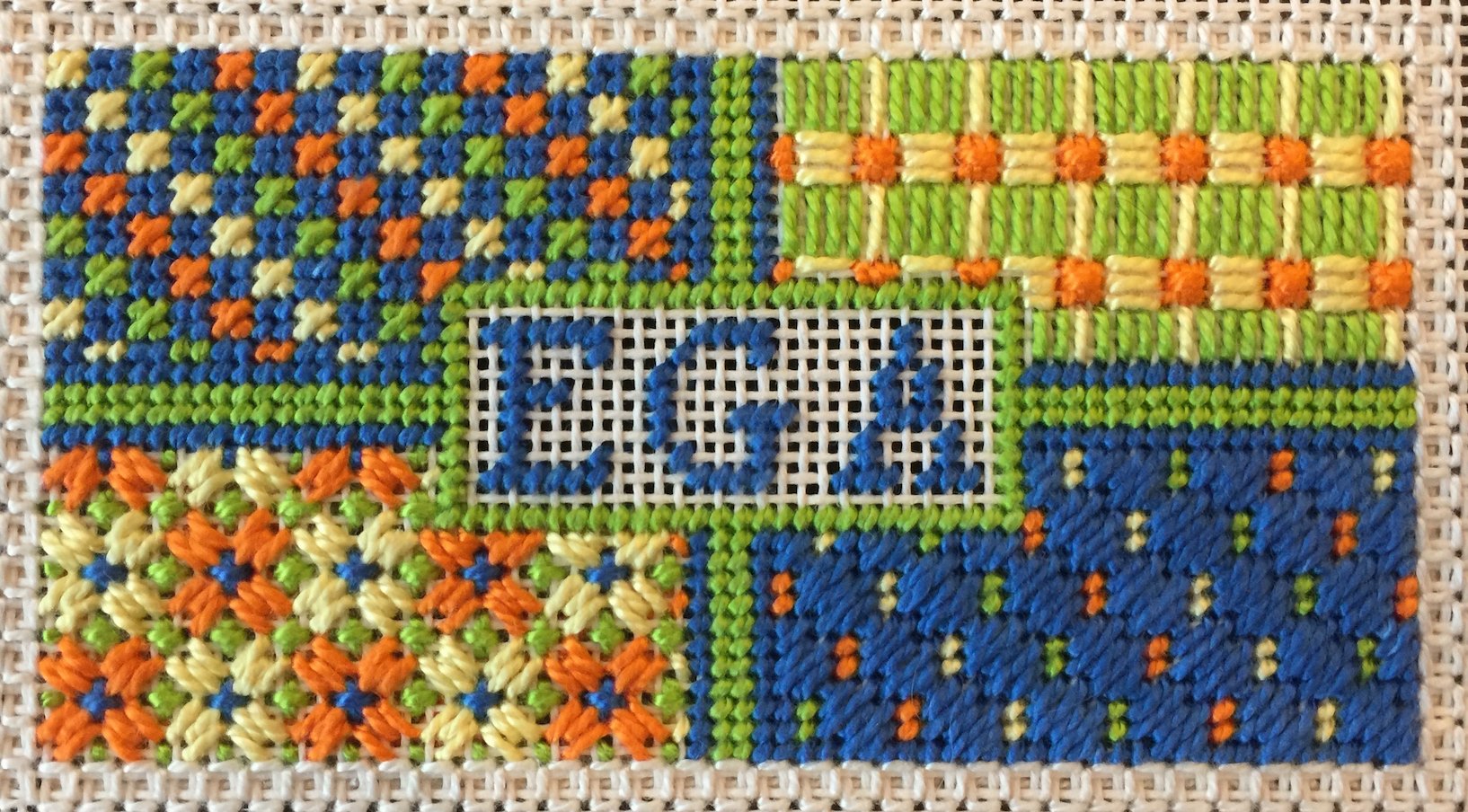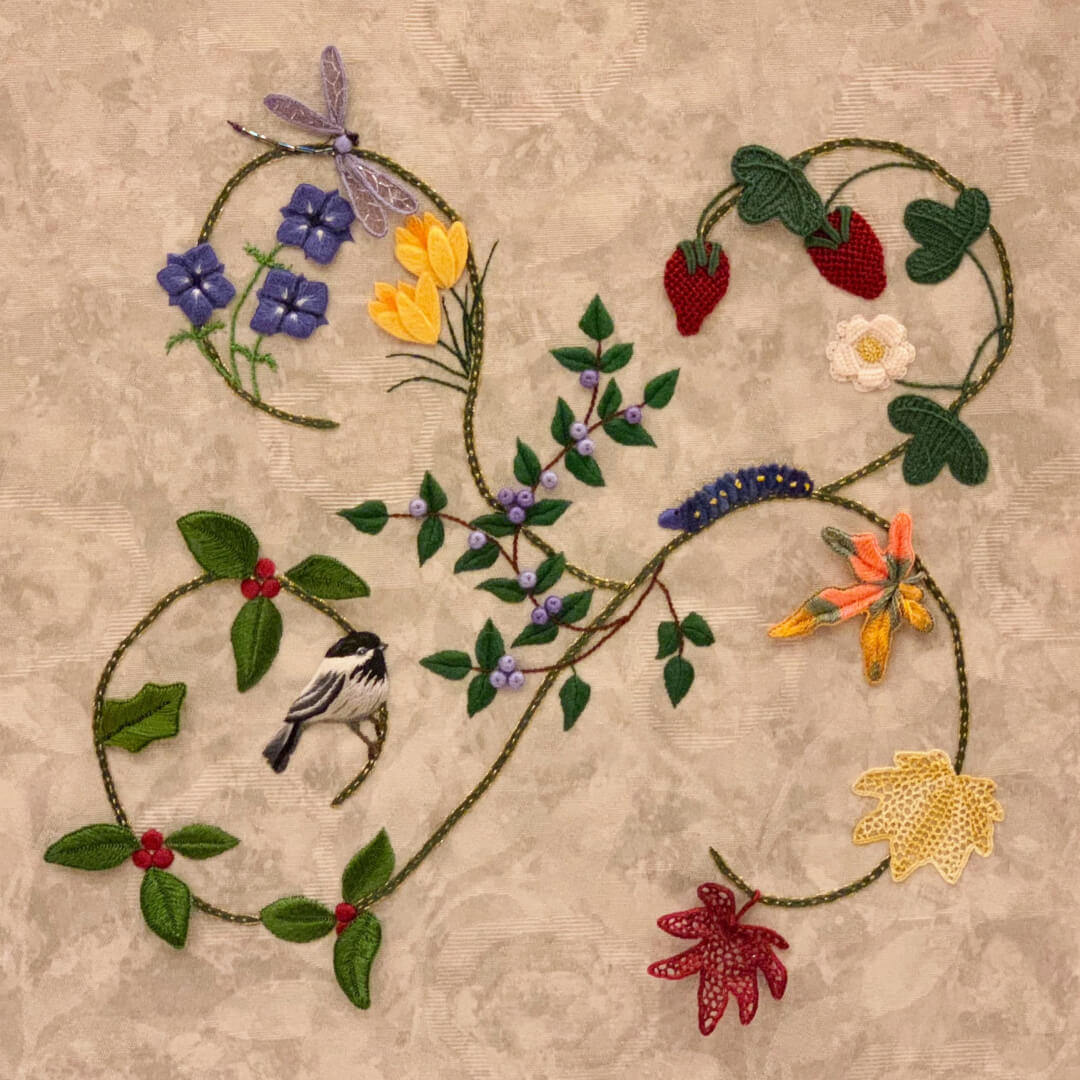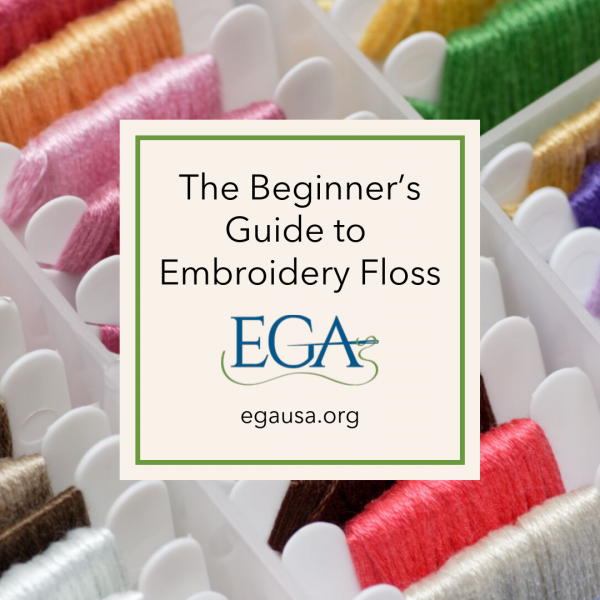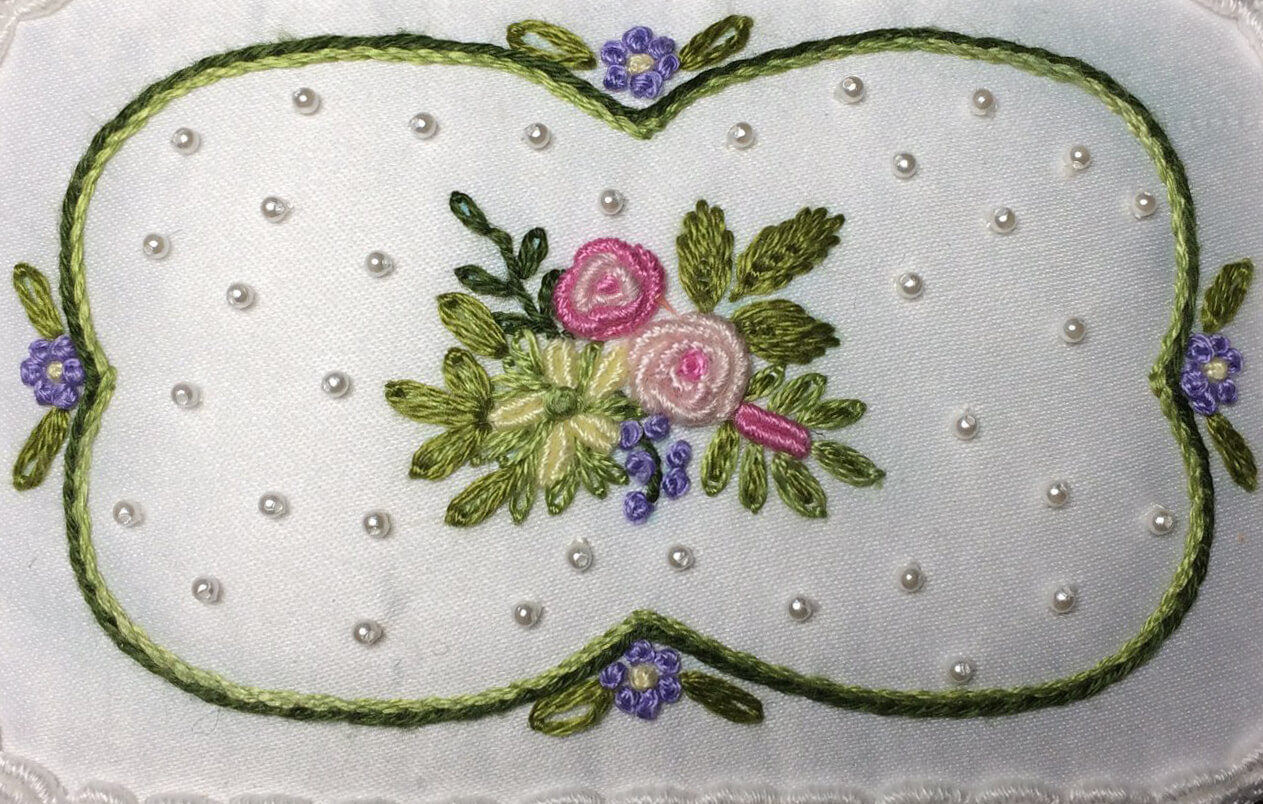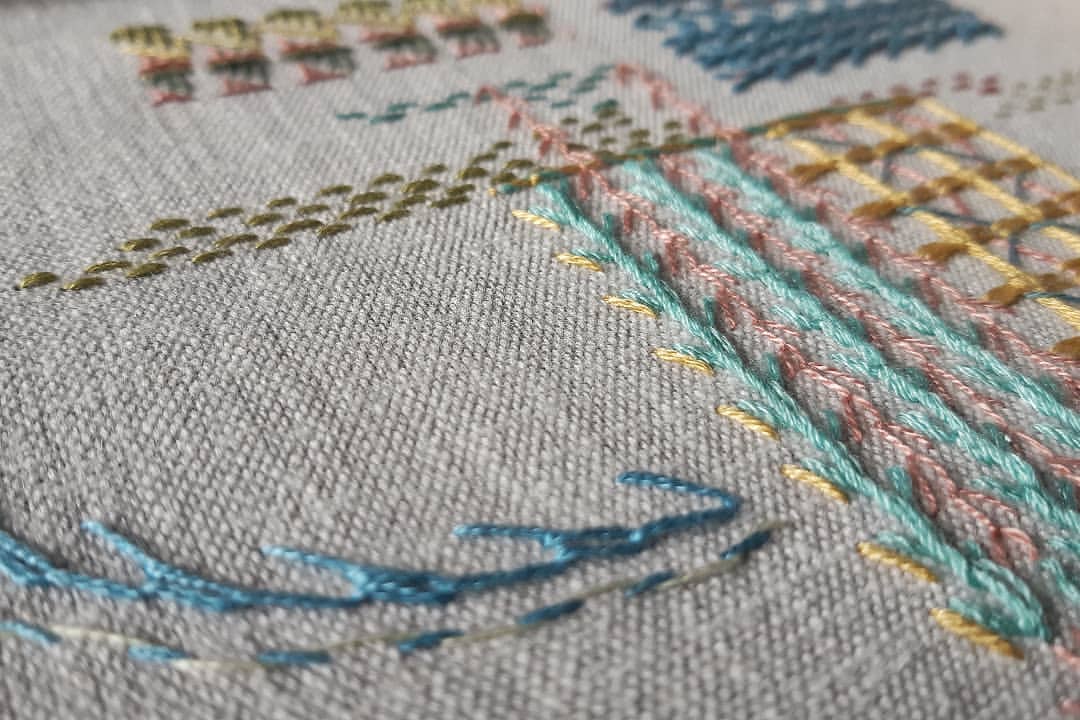Ana Luiza Catalano is an ornithologist with a PhD in Ecology. Having focused her research on bird song, Ana has cataloged hundreds of bird recordings in the process of her work. She caught our eye when she began posting intricately detailed avian embroideries using needle painting techniques. Lots of embroidery artists draw inspiration from the natural world in their work. Ana, however, takes her practice to the next level, capturing the sound of her subjects alongside their portraits to paint a fuller picture of the birds. We sat down with Ana to learn when and why she began embroidering birds, and how stitching their songs enhances the experience of viewing her work.
When did you first start embroidering?
I started embroidering in June of 2020. I had just finished my PhD (I am a biologist and I study bird song) and everything was in “stand-by mode” due to the pandemic. I had always admired embroidered clothes, especially more realistic embroideries. I saw an online needle-painting embroidery course in which the final project was a bird and I decided to give it a go.
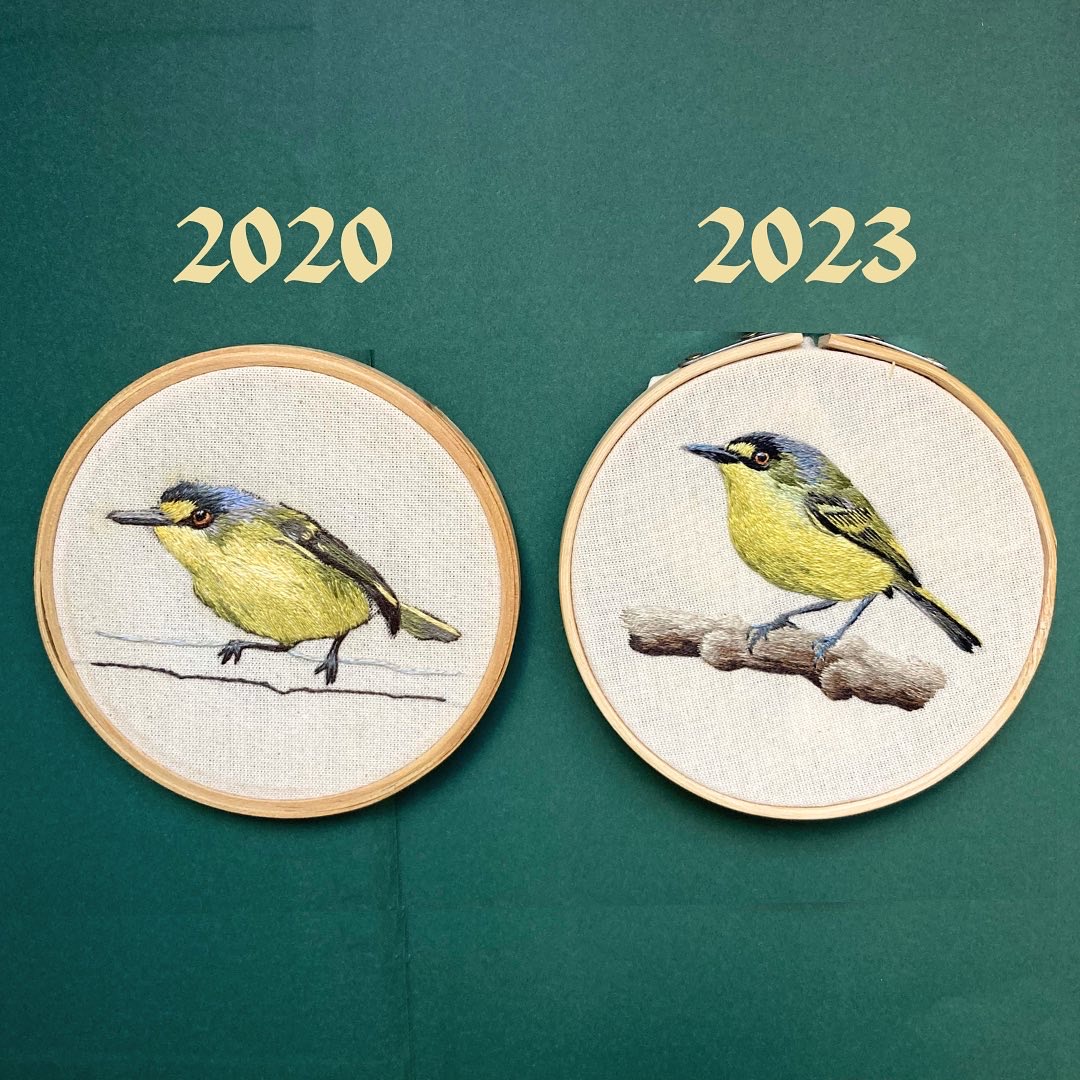
What inspired you to start embroidering birds?
I study bird song and one of my biggest passions in life is to go sound recording in the field. I was never really interested in taking photos of the birds in the way I like to capture their voices, but I always enjoyed art and wanted to find a way to portray them visually too. So when I found an online course that had a bird as a project, it was the final push for me to go and try. After doing a number of pieces, I can really say that threads are excellent to portray birds and give them a feathery look.
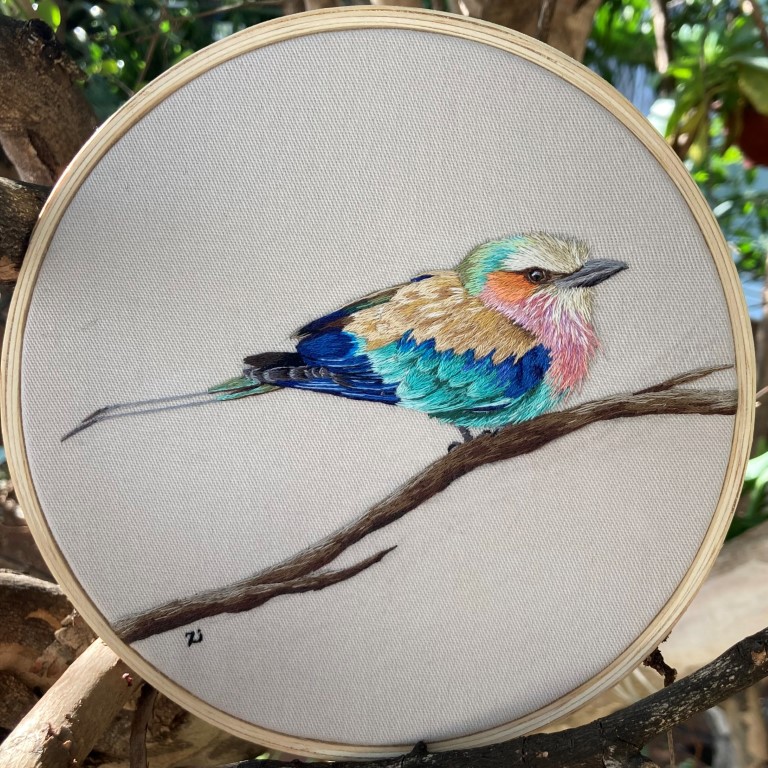
Many of your avian embroideries also feature sound waves, known as oscillograms, and sonograms. What does the process of capturing oscillograms and sonograms and translating them to embroidery look like?
The process of embroidering sonograms is not much different than embroidering the bird, where I just fill the sonogram sketch with a single thread – I use darker colors (usually black) on the loudest parts and lighter shades (dark gray) on less powerful parts of the note/phrase. For oscillograms it is a bit different, since I use two strands (instead of one) and I do straight parallel lines.
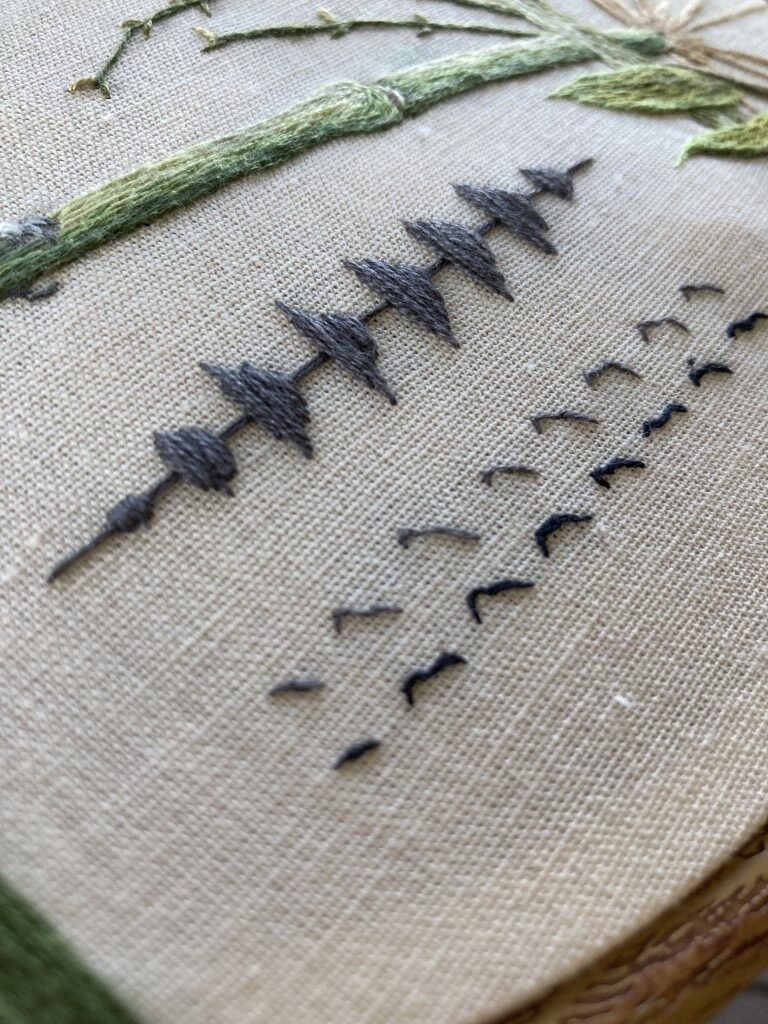
How many bird songs have you recorded? How many bird songs have you translated to embroidery?
I have recorded the song, call, or other sounds of 439 different species. I think I have embroidered close to 15 different sonograms and oscillograms.
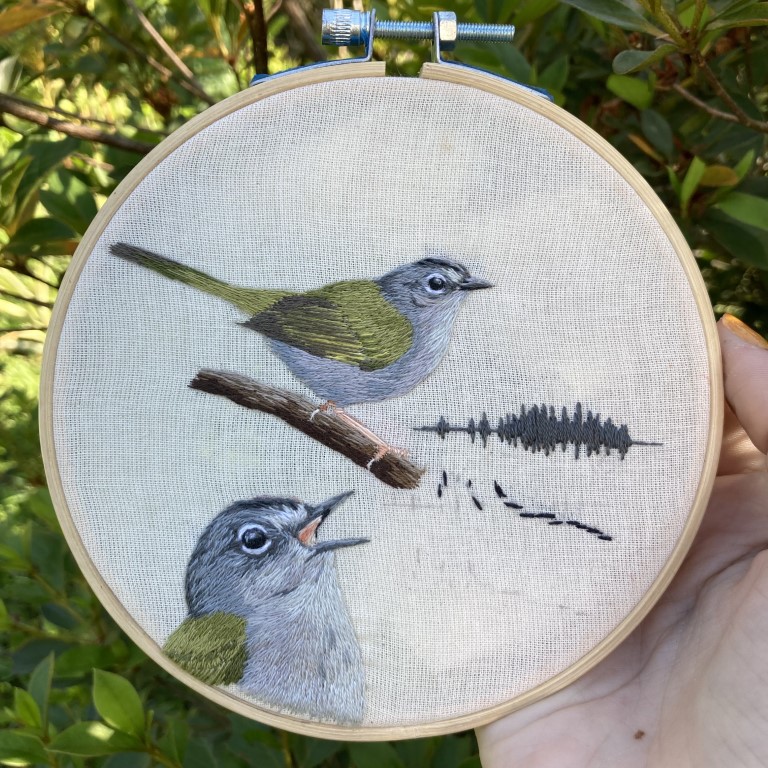
Why do you enjoy capturing the oscillograms and sonograms of birds in embroidery? Does it help you in your scientific research?
I always enjoyed combining the visual and sound aspects in my pieces and to portray sound in these graphs is a way to do this. Oscillograms show the relation of amplitude over time, and sonograms show us how frequency (how high and low pitched) varies over time. Looking at these images, even without listening to the sound, gives us a notion on how each species sings. Plus, I think sonograms and oscillograms are really beautiful and complement the pieces.
Have any bird species’ sounds been particularly difficult to capture in an embroidered sonogram?
I think sounds with messy harmonics (multiple frequencies from the fundamental tone) are usually trickier, but I always have fun doing them. I feel like it is less of a responsibility than embroidering the bird itself.
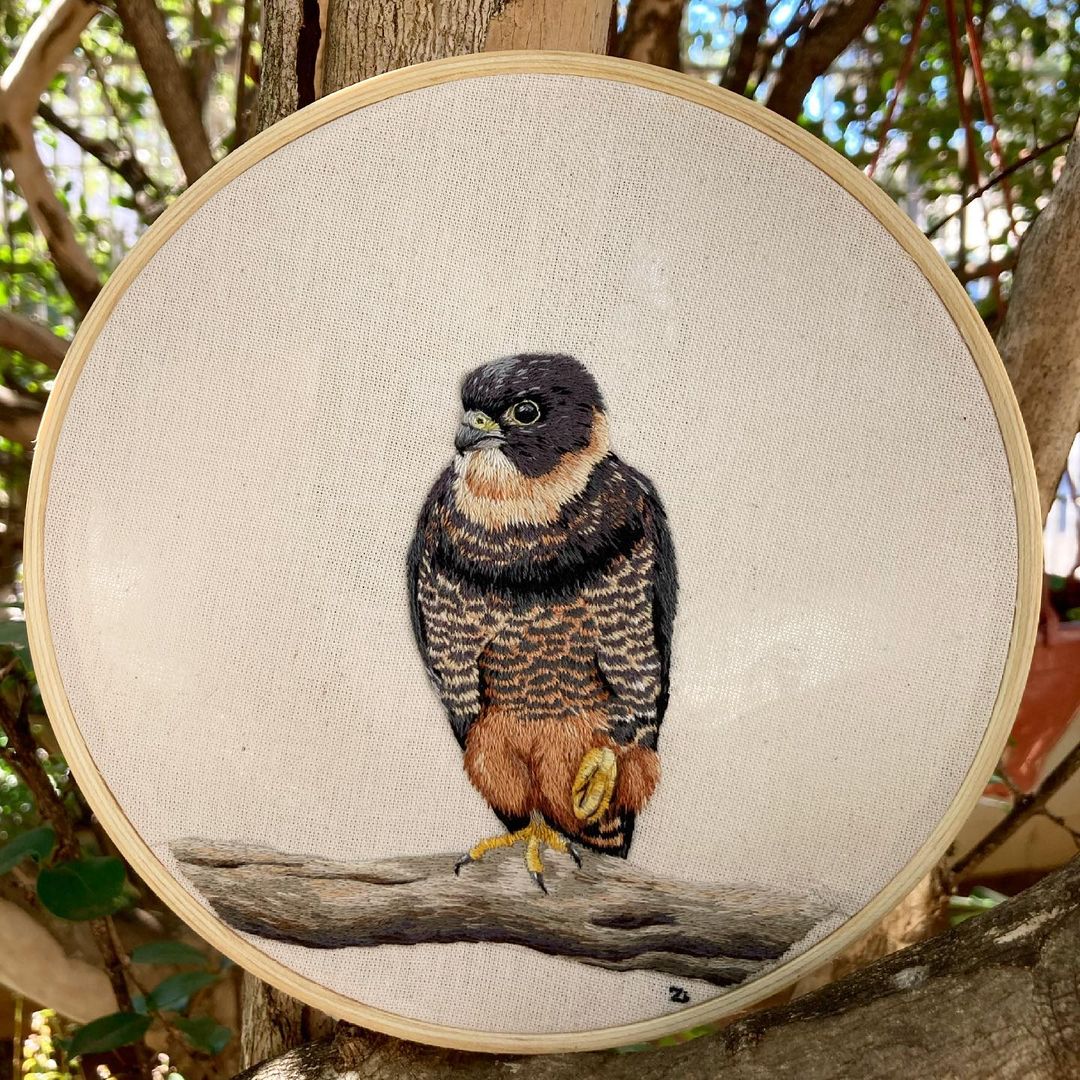
Do you have a favorite bird you’ve captured, both as a sonogram and as an embroidery?
Yes, for the embroidery I did of a Sandhill Crane, I could use one of my own recordings to create the embroidered graphs. When I recorded this species in California I was able to capture a clean sample of their amazing sound. It was also quite fun to embroider the bird in an active pose.
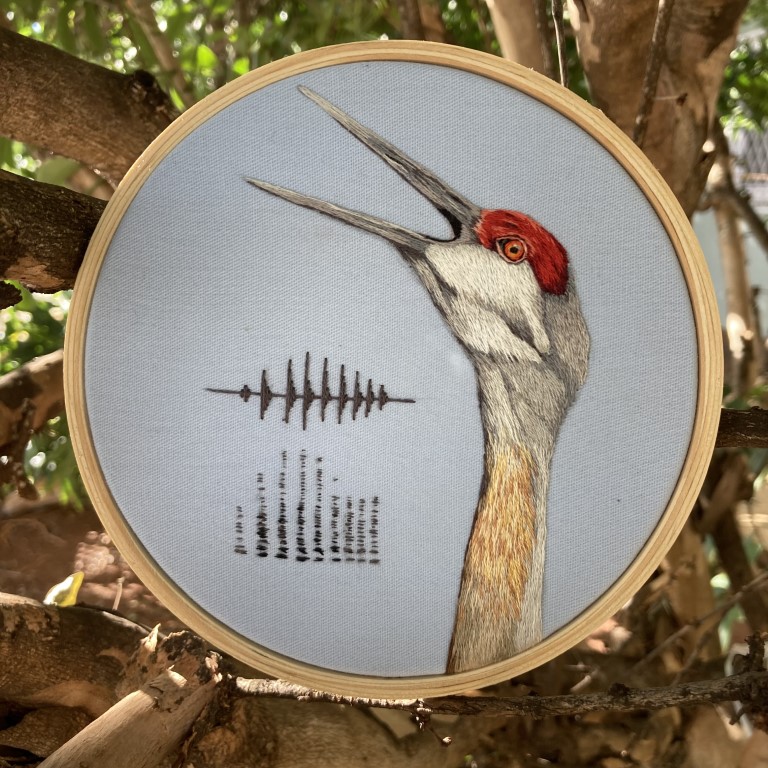
What does the process of embroidering a bird species and its sonogram and oscillogram look like? Do you work from observation, ornithological artwork or use any other kinds of resources?
To embroider a bird we rely on our ability to choose the colors, stitch direction, and how we blend the threads and make the color transitions. I do what is called “needle-painting” and I use a single strand of thread to embroider birds.
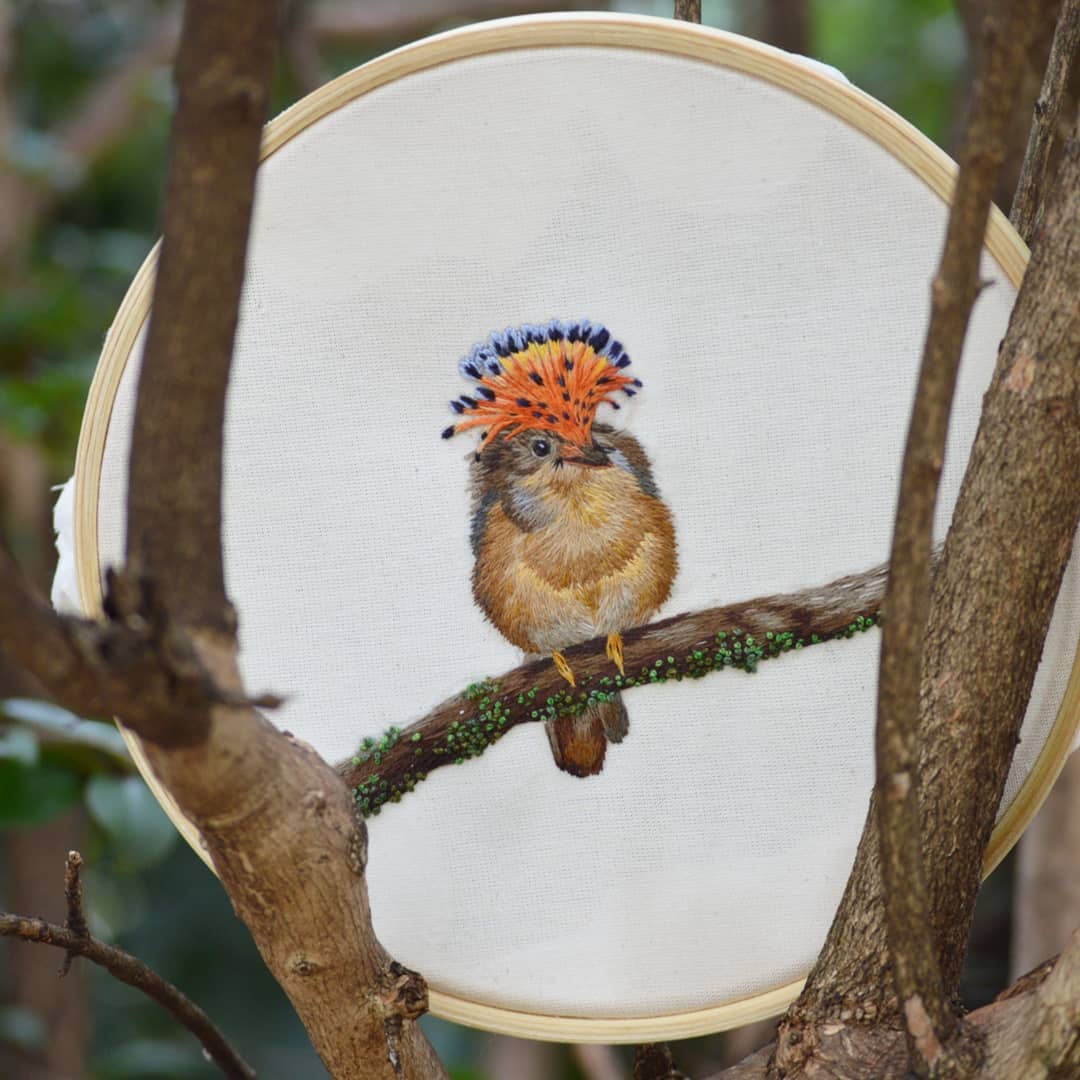
I always start from the eye, because I think that is the most important part that will support the whole look of the bird. I then proceed to the beak, which is also very important for the accuracy of your piece, since there are many variations of beaks and a few stitches less or more makes a lot of difference.
I spend a lot of time just looking at photos to gather details on color and behavior (position) and I always try to portray them in a more neutral light, not too sunny or shady. For the graphs, I open the sounds on software to generate the image and edit the images to make the sketch and transfer it to the fabric to embroider.

What do you hope your embroidered birds communicate to the viewer?
I hope that the viewer can experience and use the art to learn more about the species in a fun way. While appreciating the details of the embroidery, the viewer may also grasp some features about the birds’s morphology, coloration, and even behavior.
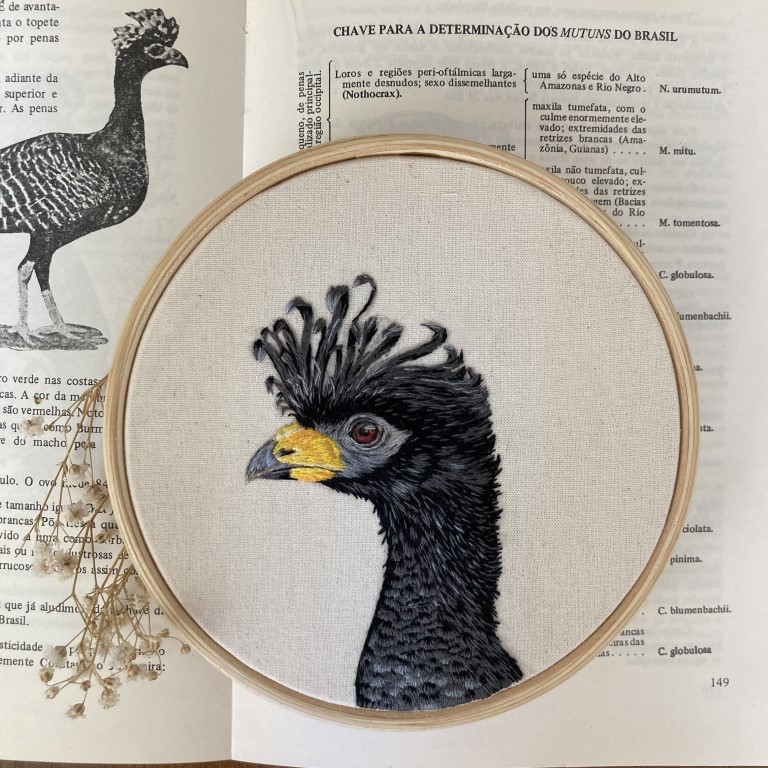
Which birds are you currently embroidering?
I am currently embroidering a European Starling. I had a few content ideas for this piece. I am embroidering just the colored layer at first and will do the spots (or starts) after that.

Do you have any upcoming projects you’d like to share? Where can interested stitchers learn more about you and your work?
I have an ultimate goal of publishing a science book with embroidered illustrations; we’ll see if that is possible in the upcoming years!
I also have five released ebooks with step-by-step tutorials to embroider five different bird species using needle painting. These books are in Portuguese but I do intend to release English ones in the near future as well. All of my pieces are on my instagram account as well as other bird-related content: instagram.com/bordandoespecies.
